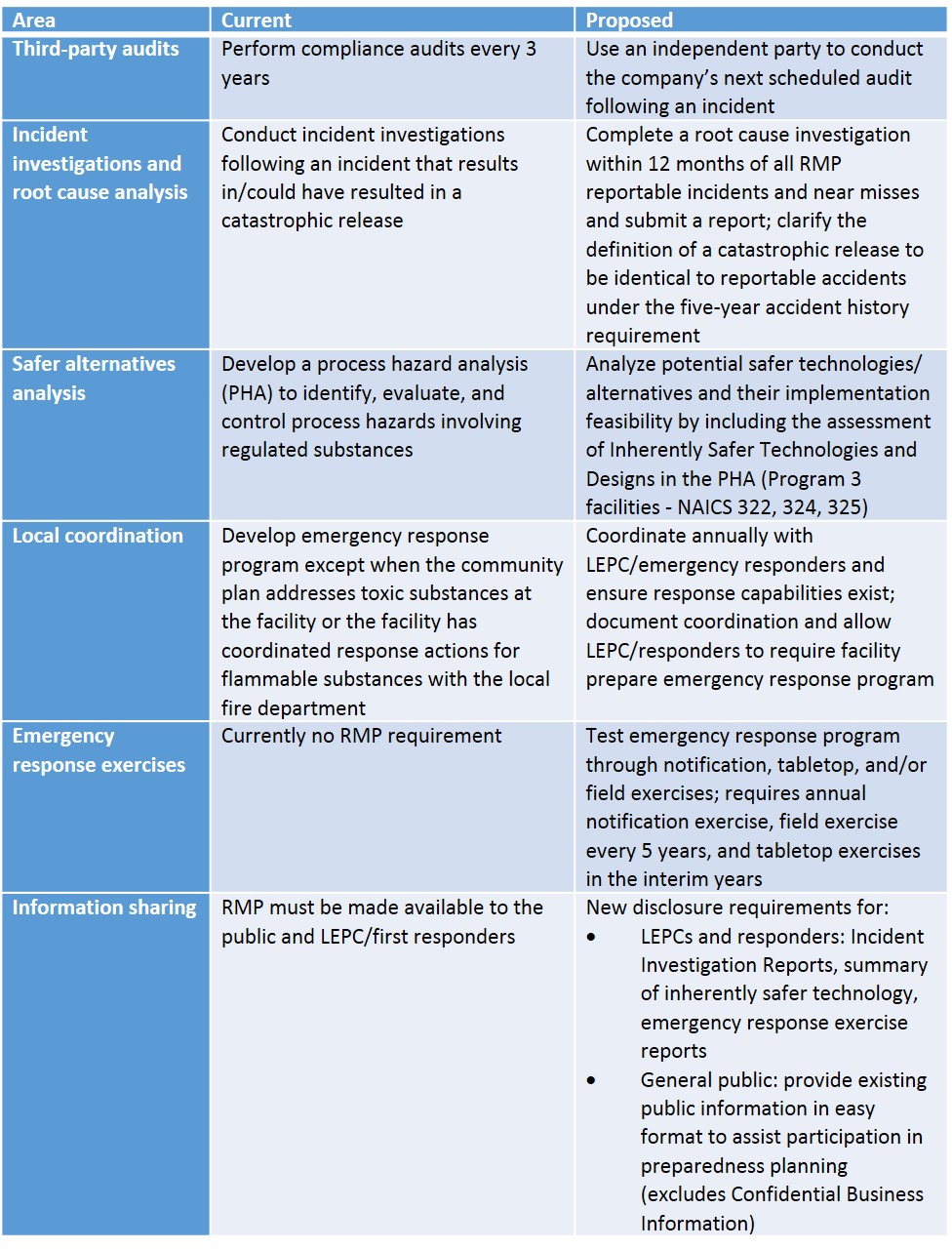
Environment
Comments: No Comments
Since President Obama issued Executive Order (EO) 13650, Improving Chemical Facility Safety and Security, in August 2013, Kestrel has been following the USEPA’s efforts to carry out the EO, specifically as it relates to the Risk Management Plan (RMP) rule.
After extensive information gathering over the past two years, including issuing a Request for Information (RFI) and conducting Small Business Advocacy Review (SBAR) panels, the USEPA announced its proposed revisions to the RMP regulations on February 25, 2016.
Why RMP?
While chemicals are obviously an important part of so many aspects of our lives, improper handling and management can result in catastrophic releases that have severe and lasting impacts—loss of life, injury, property damage, community disruption.
The RMP Rule implements Section 112(r) of the Clean Air Act Amendments, and is aimed at preventing and/or reducing the severity of accidental chemical releases. RMP applies to all stationary sources with processes that contain more than a threshold quantity (TQ) of a regulated substance (based on toxicity, volatility, and flammability criteria). These sources must comply with the RMP regulations by taking defined steps to prevent accidents and by preparing and submitting an RMP to USEPA at least every five years.
Despite the RMP Rule, according to the February 25 USEPA press release referenced above, “While numerous chemical plants are operated safely, in the last 10 years more than 1,500 accidents were reported by RMP facilities. These accidents are responsible for causing nearly 60 deaths, some 17,000 people being injured or seeking medical treatment, almost 500,000 people being evacuated or sheltered-in-place, and costing more than $2 billion in property damages.”
These impacts—amongst other things—reinforce the EO and highlight the importance of modernizing the existing RMP Rule to:
- Improve chemical process safety
- Assist authorities in planning for and responding to accidents
- Improve public awareness of chemical hazards at regulated sources
Proposed Rule
The proposed amendments, as outlined in the table below, are intended to improve the requirements to enhance chemical safety at RMP facilities. Of important note, the USEPA is not proposing any revisions to the list of regulated substances under RMP at this time; however, the Agency may propose additions to this list in a separate action.

Things to Consider
There are a number of alternatives that the USEPA is still considering the proposed changes outlined above. The Agency plans to hold a public meeting to allow stakeholders to comment on the proposed rule; written comments may also be submitted within 60 days after the proposed rule is published in the Federal Register.
In reviewing and commenting on the proposed rule, it is important to consider the following:
- How might the proposed amendments impact your business?
- What additional and/or different criteria for third-party auditors should be required?
- What clarification may be required to effectively coordinate with LEPCs?
- What information is appropriate to share to improve emergency coordination with local responders and the community?
- What issues does your facility foresee with rule compliance?
Again, the proposed changes to the RMP Rule represent just one of the actions that the U.S. government is undertaking to improve chemical safety and security. Kestrel will continue to track these amendments, as well as other actions and decisions that may impact chemical facility operations.
